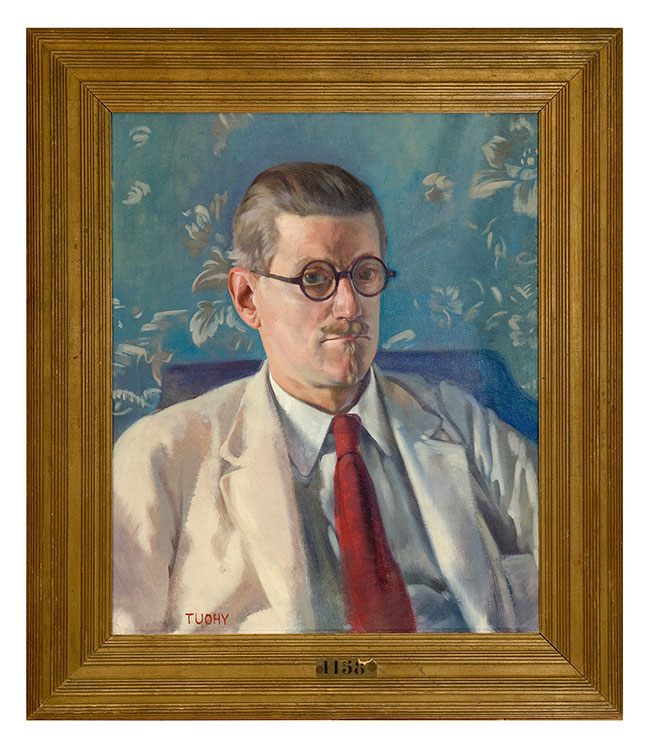
Joyce’s struggles to publish Ulysses ended in the 1930s. In response to Judge Woolsey’s 1933 ruling in New York, the author wrote, “Thus one half of the English speaking world surrenders.” When the novel was at last released in England in 1936, he reportedly told friends, “I have been fighting for this for twenty years. . . . Now the war between England and me is over, and I am the conqueror. . . . We’ll see how the Irish will take it now.”
Two years after the first edition of Ulysses, Joyce began writing the radical novel Finnegans Wake. Living in Paris, London, and Zurich, he enjoyed financial rewards due to Ulysses’ success, particularly in America. He twice graced the cover of Time magazine, and when he and Nora married in London in 1931, photographers snapped their picture. The women who had facilitated his publishing career--Margaret Anderson, Harriet Shaw Weaver, and Sylvia Beach--were largely superseded by European and American men; Paul Léon now played the role of friend and business manager. The last decade of his life was also marked by the death of his father, a severe decline in his eyesight, and concern for his daughter Lucia’s mental health. Finnegans Wake was finally published in 1939. As the Second World War began, Joyce and his family again sought refuge in Zurich, where the author died from a perforated ulcer in 1941.
Patrick Tuohy (1894–1930)
Portrait of James Joyce, ca. 1924
Oil on canvas
Courtesy of the Poetry Collection of the University Libraries, University at Buffalo, the State University of New York
